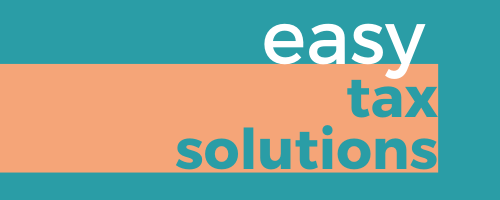How to use the Easy Tax Solutions 12-week cash flow planner
When operating a business, it is essential to forecast and monitor your cash flow.
By using a 12-week cash flow planner you will be able to plan ahead for good times or bad!
Drilling down on your predicted cash flow and spending will be like having a crystal ball for your business. Forecasting your cash flow will give you an idea of the future needs of your business and to see how stable your operations are.
Once you have set up the planner, you can see at a glance: -
If there is a month where you might fall short of cash
When you will be able to afford that extra piece of equipment
When you should increase your prices
What happens to the bottom line if you have additional expenses?
If you want to expand your business, can you afford it?
Can you afford to hire new staff?
Will you have enough cash reserves to cover the Christmas holiday period?
What are the cash trends in your business? Are there seasonal factors to take into account?
If your business is achieving your objectives
If you can draw a wage from the business
The process
Before you begin to forecast into the future, you need to assess what has happened in the past. What has been your spending and income over the last month, quarter and year and how has this impacted your cash flow? Do you have regular monthly expenses? Are there seasonal spending and income patterns? Look at your profit and loss account for the last 12 months to give you a starting point.
The most important areas you need to look at before you can start building your cash flow plan are:
1. Funds owed – Do you have debtors or creditors? You will need to factor in the effect of these receipts and payments in the first month of your plan.
2. Sales/Revenue – Look at patterns in your income. Is there recurring income? Are there times in the year when income fluctuates?
3. Fixed costs – What are the costs that are incurred on a regular basis? Do you have expenses for wages, rent, insurance, bank fees, loan payments, leases?
4. Variable expenses – these are the costs of your business that might vary month to month – examples include electricity, telephone, motor vehicle expenses, repairs and maintenance etc
5. Inventory – If you have stock, you will need to predict how much inventory you need to carry at different times of the year. You will then know how much cash you will need for raw materials or for stock purchases to correlate with the sales patterns.
6. Capital requirements – how much money do you need to keep your business going? What is the amount of money you need to pay the bills? Do you need to draw a wage?
After examining your past profit and loss account, and considering the factors listed above, you are ready to construct your cash flow plan. It is always better to be a bit conservative in your predictions – if you end up with greater funds than predicted, that’s a good thing!
Although you will not be able to predict the future, the cash flow plan will give you a good basis for anticipating future needs. At the end of the 12-week period, look at your profit and loss account again to see how accurate your plan was.
It’s also important to note that if there is a significant change in your operations, such as the COVID-19 pandemic, that you have a system in place where you can revise your projections.
Easy Tax Solutions can assist you with constructing your cash flow plan, so contact us if you have any questions at admin@easytax.solutions.
You can download the 12-week cash flow planner here!

